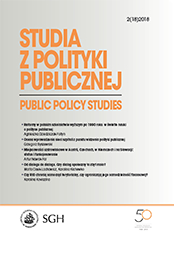Skuteczność administracyjnej regulacji cen kredytów konsumenckich w obszarze shadow banking w świetle doświadczeń
polskich i międzynarodowych
Effectiveness of Price Regulations of Consumer Loans in the Shadow Banking Area in the Light of Polish and International Experience
Author(s): Łukasz GębskiSubject(s): Politics, Economy, Law, Constitution, Jurisprudence, Public Administration, Public Law
Published by: Szkoła Główna Handlowa w Warszawie
Keywords: shadow banking area; microloans; consumer protection; consumer loans
Summary/Abstract: This article concerns the effectiveness of price regulations (the application of the ratecap) in the shadow banking area. The author analyses the situation in Poland and the examples from the selected markets (where this type of regulations was implemented).Taking into account that the main role of the regulator is to ensure the highest possiblelevel of consumer protection in the financial market, by eliminating the negative impactof asymmetries and usury – the effectiveness of proposed solutions stays crucial for allmarket players.Until 2015 lending activity and market practices related to microloans (payday loans)offered by Non-Banking Financial Institutions in Poland were not regulated. After AmberGold’s bankruptcy a lot of actions were taken to regulate the consumer finance market including a plan to limit the maximum cost of a consumer loan. All the proposed measureswere similar to those implemented in other countries.Examples of regulations from other countries show that too restrictive regulations mayhave increased financial exclusion, but too liberal/imprecise ones might make them ineffective.Regardless the identified risks, the Polish government decided to apply hard/restrictive market regulations.
Journal: Studia z Polityki Publicznej
- Issue Year: 17/2018
- Issue No: 1
- Page Range: 33-48
- Page Count: 16
- Language: English, Polish

